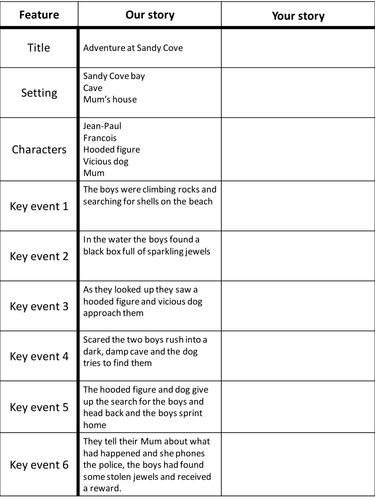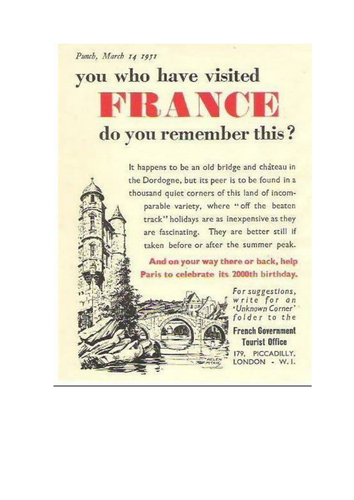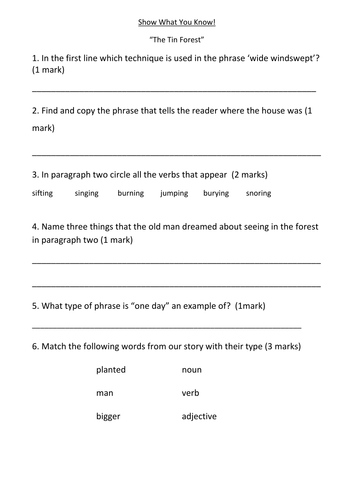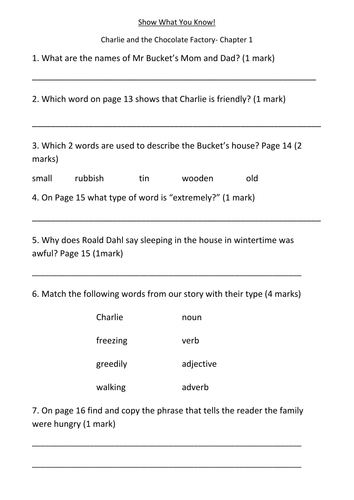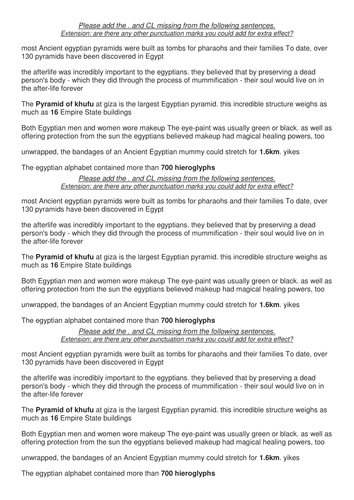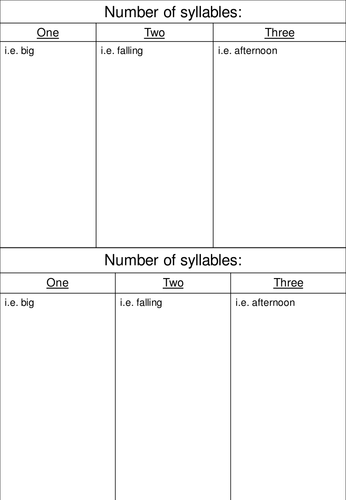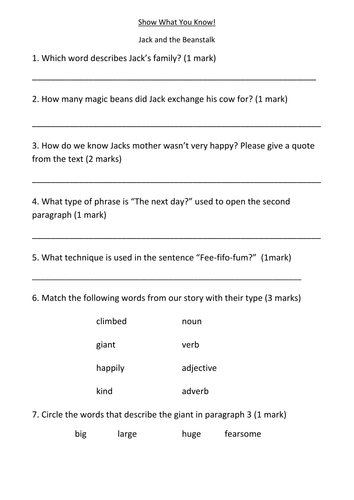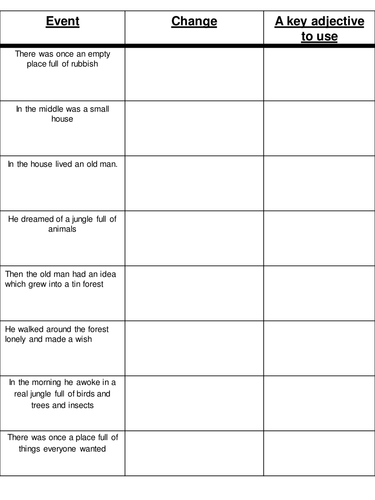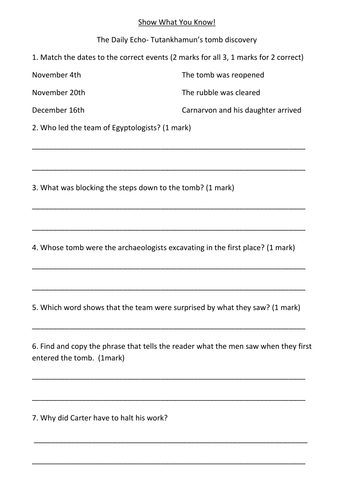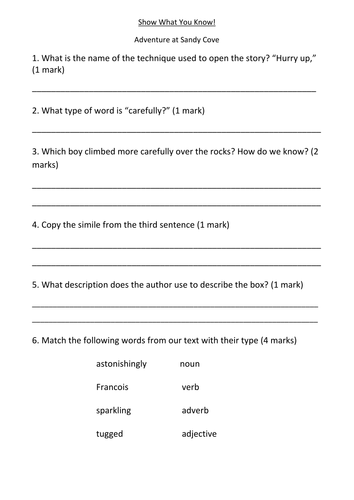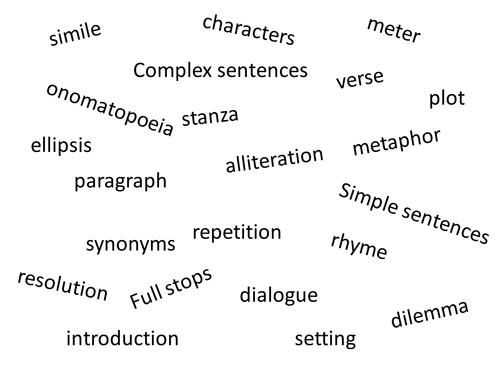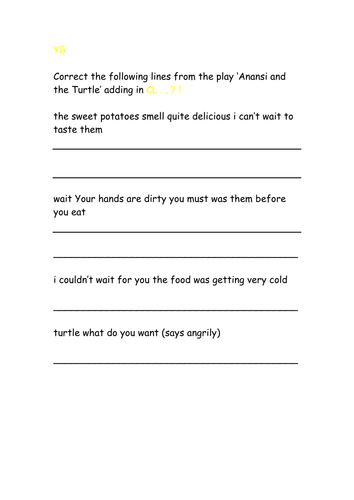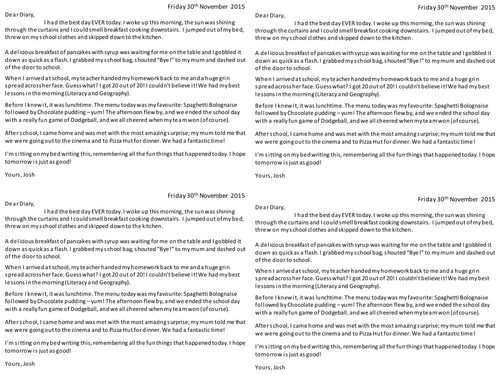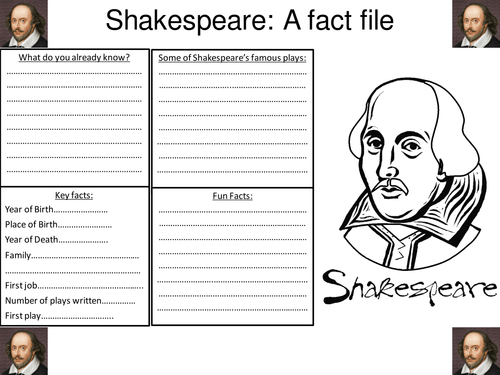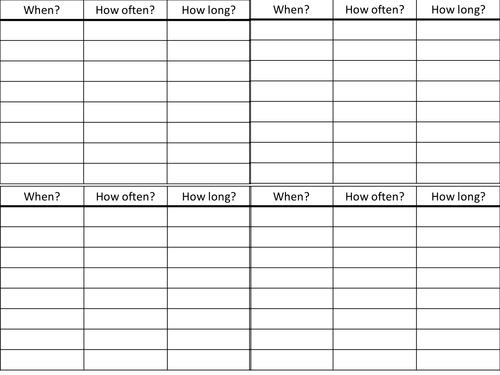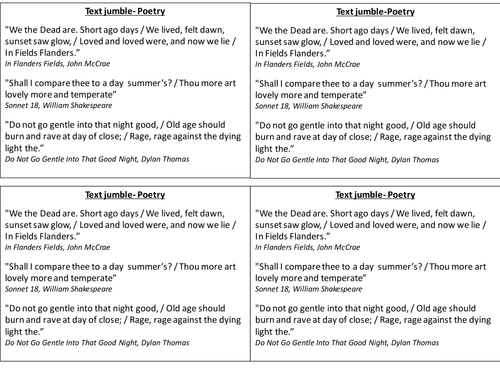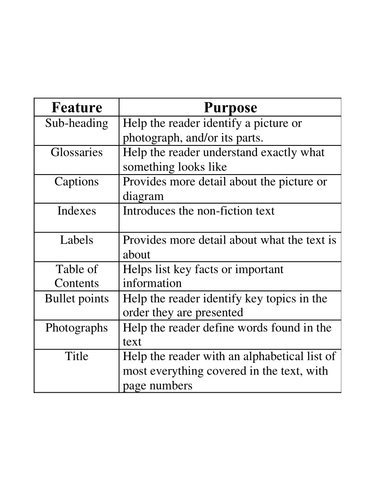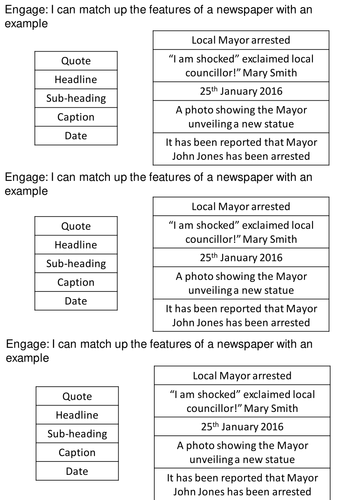
50Uploads
56k+Views
2k+Downloads
English

Adventure at Sandy Cove, Pie Corbett, boxing up and innovation tables, 4 way differentiated
A set of 4 worksheets to help children box up and remember the key events from Pie Corbett's short story, The Adventure at Sandy Cove
Worksheet 1, all the key events and characters/setting from the story are already typed up and children just have to plan their own innovations
Worksheet 2, same as above but with an extra column for children to plan a key sentence to use in writing their own story
Worksheet 3, children have to first box up the key events and details from the original story and then plan their own innovations
Worksheet 4, same as above but with a space for children to plan their own key sentence

3 way differentiated comprehension texts and questions around persuading someone to visit France
3 way differentiated comprehension texts and questions based around the theme of visiting France.
For the BA group there is a advertising poster for the children to read and answer questions from dating from 1951
For the A group a postcard has been written for the children to read and answer questions from picking out the persuasive language
For the HA group there is a persuasive letter for the children to read and answer questions from picking out the persuasive writing techniques
The resource provides a nice link to a persuasive writing topic and MFL
Used with a Year 4 class

The Tin Forest comprehension test
A series of different SATs style comprehension questions based around the popular picture book "The Tin Forest" by Helen Ward and Wayne Anderson
Tests children's knowledge of literary techniques, word classes, and authorial intent
Answers are also included
Used with a Year 4 class

Charlie and the Chocolate Factory Chapter 1 Comprehension
SAT's style comprehension questions based on Charlie and the Chocolate Factory Chapter 1.
Questions ask children to think about word types, punctuation features and effects the writer is trying to create. A great introduction to the book and to check understanding of children's reading so far.

Missing punctuation activity, based around Ancient Egypt
A Literacy task asking children to add in the missing punctuation to a series of facts about life in Ancient Egypt
Can be used as a lesson starter in Literacy or a Topic lesson with a Literacy link
Please add the . and CL missing from the following sentences.
Extension: are there any other punctuation marks you could add for extra effect?

French Alps persuasive poster correct and improve exercise
An advertising poster persuading people to visit the French Alps for a holiday using different persuasive writing techniques.
Trick is there are a lot of Spelling, Grammar and Punctuation mistakes for children to read and correct.
As an extension they are then asked how they can improve the persuasive poster, add in different techniques and write.
Used with Year 4 during a persuasive writing unit, can link in with MFL

How many syllables activity? Word list and sorting table
An activity that can be very useful when used alongside a poetry unit where there are rules about number of syllables in lines, i.e. Haiku's
There is a table split into 3 columns for 1, 2 and 3 syllable words with a word list set out on the next page for children to read out, clap out, sound out and sort into the three columns.
Used with Year 4

Jack and the Beanstalk text and comprehension
A SAT's style comprehension reading activity and questions based around the traditional tale Jack and the Beanstalk
Questions focus on word classes, authorial intent and ask children to provide evidence, quotes from the text

"The Tin Forest" story innovation table
A three way differentiated document boxing up the key events that happen in "The Tin Forest" story by Helen Ward and Wayne Anderson.
The tables allow children to plan how they might innovate the key events in the story and gives space for children to add in a key adjective they might use BA and a key sentence they might use A.
For the HA the table is blank allowing them to 'box up' the stories key events for themselves and plan their innovation to re-write.
A great resource for helping children cover the NC objective of being able to:
plan their writing by:
discussing writing similar to that which they are planning to write in order to
understand and learn from its structure, vocabulary and grammar
discussing and recording ideas

Tutankhamen newspaper article comprehension
A series of comprehension questions ranging in marks and activity from matching exercises to 3 mark questions based on the newspaper article about the discovery of Tutankhamen's tomb that can be found at the link below:
https://www.tes.com/teaching-resource/a-newspaper-article-about-tutankhamun-6187451

Adventure at Sandy Cove SAT's style comprehension questions
14 questions based on Pie Corbett's short story Adventure at Sandy Cove
Questions ask children to think at a word level, sentence level, think about imagery and authorial intent
Some longer questions require children to find evidence from the text to support their answers

Poetry and Story techniques venn diagram sorting worksheet
2 files to test children's knowledge about story and poetry techniques.
On one page there is a jumbled word bank of a wide range of Literacy techniques a Year 5 child should know and then there is a venn diagram worksheet for the children to sort between story techniques, poetry techniques and then of course any that could be found in both.
For the more able children I chose to let them write the techniques and for a support children could cut and stick into the relevant sections on an enlarged diagram sheet

4 way differentiated Anansi and the Turtle punctuation correction exercise
All lines are taken from the popular tale of Anansi the spider and the turtle who came to dinner. A great story to use to teach about sharing.
There are a selection of different lines from the story spread across 4 worksheets with punctuation mistakes made and space for children to write out and correct.
The blue (SEN) worksheet children have to add CL . , ?
The yellow (BA) worksheet children have to add CL . , ? !
The orange (A) worksheet children have to add CL . , ? ! ( )
The red (MA) worksheet children have to add CL . , ? ! ( ) . . .
Used with a Year 4 class

Diary entry reading comprehension
A Diary entry and series of SAT's style comprehension questions.
The diary entry contains a wide variety of different diary features and can be used as an excellent starting point for a series of work about diary entries providing a good example.
The questions focus on different techniques used alongside developing children's inference and deduction skills.

Shakespeare fact file worksheet
A worksheet created to help structure children's research into William Shakespeare.
It asks key questions such as Year of Birth,
Place of Birth,
Year of Death,
Family,
First job,
Number of plays written,
First play.

Time adverbials sorting exercise
A word mat of lots of different adverbials for children to classify into adverbials that state
when something happens
how often something happens
and how long something takes

3 jumbled up lines of famous poems for children to read and re-order
In Flanders Fields, John McCrae
Do Not Go Gentle Into That Good Night, Dylan Thomas
Sonnet 18, William Shakespeare
Used with Year 4

Non-fiction text feature and purpose matching activity
A 4 way differentiated text feature and purpose matching activity.
For SEN they have a whole list of text features and purpose definitions to cut out and match
The BA have a couple of names of features and purposes missing, so they have to match the rest and work out which are the missing features and what are the missing purposes
For A they have the same activity with a few more blanks to fill
For the HA they have just a blank table with all the features listed and have to come up with a purpose for each.
Features listed include; sub-heading, glossaries, captions, indexes, labels, table of contents, bullet points, photographs and titles

Haiku, Tanka and Cinquain comprehension activity
A comprehension questions and text based around the three types of poetry above.
The resource contains 3 poems with a series of questions based around the number of syllables in each line, it also checks childrens understanding of the poetry rules and authorial intent

Newspaper Article Features and example matching exercise
A matching exercise asking children to match the newspaper feature, e.g. headline, strapline, caption etc.. with an example.
Used to assess childrens prior knowledge of newspaper articles in Year 4

